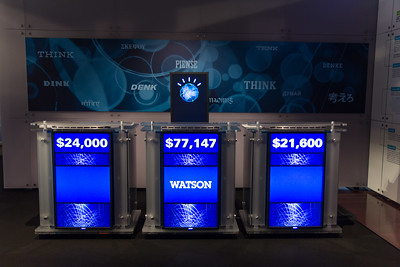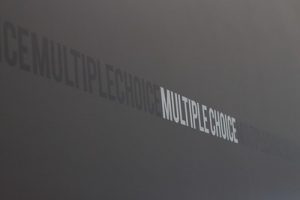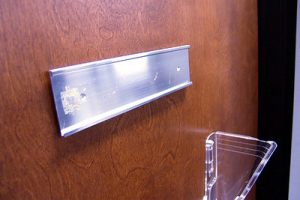If this were Jeopardy!, the clue would be, “The most important question WCC Trustees aren’t asking.”
Among the other questions that WCC Trustees aren’t asking, are:
“Why are WCC’s administrative costs larger than those of Macomb Community College, when WCC is only two-thirds of MCC’s size?”
“Why does Alpena Community College, which has one-quarter of WCC’s square footage, have a larger maintenance budget than WCC does?”
“If we have the third-largest property tax appropriation, and the sixth-largest budget of all Michigan community colleges, why are we running a structural deficit?”
“If we can’t take care of the buildings we have, why are we building another one?”
“With all of these extra administrators hard at work, how much has enrollment grown?”
We need WCC Trustees who will ask these questions, and more importantly, refuse to approve additional spending until the Administration addresses these key issues.
WCC’s Administrative Costs
WCC’s administrative costs are higher than Macomb Community College’s because the Administration keeps hiring more administrators. (I know – it’s deceptively simple.) WCC has 10 Vice Presidents. Ivy Tech Community College – the largest community college system in the United States – has 13. Is WCC such a complex operation that it needs nearly as many Vice Presidents as a statewide community college system?
For whatever it’s worth, MCC cut its administrative spending by nearly 10% in FY19. WCC, on the other hand, increased its administration costs by 7.75%.
WCC Trustees have yet to refuse any of the Administration’s hiring requests. Until they do, this ridiculous pattern will repeat.
WCC’s Maintenance Costs
I was looking at the audited financial statements and Capital Outlay Plans for other Michigan community colleges, and I found this passage in Delta College’s capital plan.
“The current appraised replacement value of College buildings and equipment is $291 million. The Building Research Council recommends an annual life cycle replacement allocation of 2% to 4% of the asset value to fund routine maintenance and capital renewal. Using the midpoint of 3% would result in an allocation of $8.73 million annually. Likewise, a simple 30 year life cycle replacement calculation would call for an annual allocation of $9.7 million.
Currently, $2 million is budgeted annually for transfer from the General Fund to the Plant Fund for this purpose. In the 2019-2020 proposed budget, the College has allocated an additional $400,000 to be transferred to the Plant Fund for savings for future needs of the two new centers under construction in Saginaw and Midland. Industry standards suggest an additional $8 million should be reserved annually to assure that existing facilities are maintained and the value of the capital investment is preserved. Therefore, at the end of each fiscal year, excess General Fund revenues over expenditures beyond those needed to maintain a 10% General Fund Reserve Balance are transferred to the Plant Fund and also into the Designated Fund for ongoing budget sustainability. Specific projects planned for completion and paid through these resources are included in the Capital Expenditures Budget on the following page.”
The emphasis is mine, but using this formula, WCC’s 2021-2025 Capital Outlay Plan shows the replacement value of the WCC campus is $331,891,017. Using Delta’s formula, WCC Trustees should set aside $6.6M-$13.3M annually to fund routine maintenance and capital renewal. Instead, the Administration pisses our money away on hiring more executives.
WCC’s Structural Deficit
You don’t have to be an accountant to know that you can’t spend money you don’t have. But accountants should at least acknowledge this, and should work (hard) to prevent this from happening.
The other question that deserves to be asked is about WCC’s “capital reserves.” For years, the Administration has been putting “revenue over expenses” in a “capital reserve” fund. The apparent plan is – among other things – to use the reserves to fund the rehab of the Morris Lawrence Building. (I’d be remiss if I didn’t point out that it would have been much more cost effective to spend the money to fix problems as they arose. Instead, WCC “saved” the money so that it could pay much more to fix the building’s problems later.)
The “Advanced Transportation Center”
This one defies a straight answer. It’s not a classroom building, and frankly, it’s a waste of the limited buildable space on campus. Further, with a maintenance budget of $400,000, WCC can’t afford to take on another building. So – WCC Trustees, why are the taxpayers going to borrow money against a General Fund that’s broke in order to build a building that WCC doesn’t need and can’t take care of?
Student enrollment
With the prospect of hundreds of new students, thanks to the Futures for Frontliners program, WCC’s enrollment may – in fact – rise. It’s been steady to slightly positive for years. Adding administrators hasn’t boosted enrollment. Clearly, WCC’s runaway administrative costs are a drag on the budget, but the WCC Trustees refuse to demand change.
On November 3, the voters have the opportunity to correct the current WCC Trustees missteps. By voting for responsible trustees who advocate for the taxpayers and the students, the residents of Washtenaw County can bring badly needed change to WCC.
—
WCCWatch: Martin Thomas | WCCWatch: David DeVarti | WCCWatch: Christina Fleming | WCCWatch: Ruth Hatcher
Photo Credit: Atomic Taco, via Flickr






























